Pearl Zhu's Blog, page 1230
May 9, 2017
The Popular Quotes Collection XVI of “Digital Master” Book Series
 “Digital Master” is the series of guidebooks (15+ books) to perceive the multifaceted impact digital is making to the business and our society, help forward-thinking organizations navigate through the digital journey in a systematic way, and avoid “rogue digital.” Here is the set of popular quotes for conveying the digital vision and sharing the unique insight about the digital transformation.
“Digital Master” is the series of guidebooks (15+ books) to perceive the multifaceted impact digital is making to the business and our society, help forward-thinking organizations navigate through the digital journey in a systematic way, and avoid “rogue digital.” Here is the set of popular quotes for conveying the digital vision and sharing the unique insight about the digital transformation.
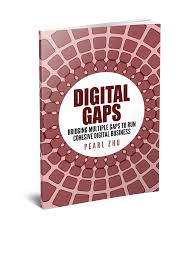 Digital Gaps: Bridging Multiple Gaps to Run Cohesive Digital Business
Digital Gaps: Bridging Multiple Gaps to Run Cohesive Digital Business
“All generations need to realize they can learn from each other, to run a successful business and an advanced society.” ― Pearl Zhu, Digital Gaps: Bridging Multiple Gaps to Run Cohesive Digital Business
“From a leadership perspective, the liking has to be qualified and be able to garner respect.” ― Pearl Zhu, Digital Gaps: Bridging Multiple Gaps to Run Cohesive Digital Business
“All leaders need to ask questions, but they also need to assist in providing answers, to bridge the gap between questions and answers.” ― Pearl Zhu, Digital Gaps: Bridging Multiple Gaps to Run Cohesive Digital Business
“Education is the means to end, not the end itself. Education should not become another status quo, or silo, or the end.” ― Pearl Zhu, Digital Gaps: Bridging Multiple Gaps to Run Cohesive Digital Business
“Having a title only doesn’t make one a leader; talented people without a title don’t follow blindly, they practice leadership via influence.”― Pearl Zhu, Digital Gaps: Bridging Multiple Gaps to Run Cohesive Digital Business
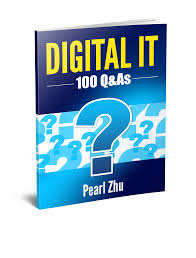 Digital It: 100 Q&As by Pearl Zhu
Digital It: 100 Q&As by Pearl Zhu
The tough choice facing CIOs is not about only picking one identity as either being strategic or tactical, but about - when acting as a strategic leader, when playing as a tactical manager.” ― Pearl Zhu, Digital It: 100 Q&as
Digital-savvy CIOs can envision the upcoming business trends and have both “sense and sensitivity” to understand people and lead effortlessly.― Pearl Zhu, Digital It: 100 Q&as
A responsive IT means a lot of things for the digital transformation: Speed, innovation, agility, integration, modernization, intelligence, value creation, and maturity, etc.― Pearl Zhu, Digital It: 100 Q&as
IT can weave all crucial business elements such as people, process, and technology into organizational competencies for running a living and fluid digital organization.― Pearl Zhu, Digital It: 100 Q&as
As a CIO, you need to understand what the organization's expectation from IT through the innovation lenses.― Pearl Zhu, Digital It: 100 Q&as
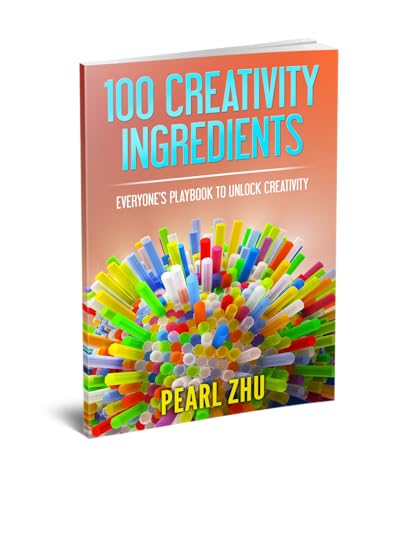 100 Creativity Ingredients: Everyone’s Playbook to Unlock Creativity by Pearl ZhuThe collective sensation is one’s perspective, experience, memory, imagination, and perception.65 Pattern understanding is the type of problem-solving thinking.― Pearl Zhu, 100 Creativity Ingredients: Everyone’s Playbook to Unlock Creativity by Pearl Zhu
100 Creativity Ingredients: Everyone’s Playbook to Unlock Creativity by Pearl ZhuThe collective sensation is one’s perspective, experience, memory, imagination, and perception.65 Pattern understanding is the type of problem-solving thinking.― Pearl Zhu, 100 Creativity Ingredients: Everyone’s Playbook to Unlock Creativity by Pearl Zhu
Creativity needs encouragement as the spirit of food, and conflict to spark it. -100 Creativity Ingredients: Everyone’s Playbook to Unlock Creativity by Pearl Zhu
Learn to visualize for inspiring creativity, and make imagination rolling into reality. -100 Creativity Ingredients: Everyone’s Playbook to Unlock Creativity by Pearl Zhu
The collective sensation is one’s perspective, experience, memory, imagination, and perception.-100 Creativity Ingredients: Everyone’s Playbook to Unlock Creativity by Pearl Zhu
While the individual contributions provide the “building block” of creativity; it is the collective consensus on what to do with them that is exciting. -100 Creativity Ingredients: Everyone’s Playbook to Unlock Creativity by Pearl Zhu
Digital attitude is about adaptability - being experimental and changeable.-100 Creativity Ingredients: Everyone’s Playbook to Unlock Creativity by Pearl Zhu
Follow us at: @Pearl_Zhu
Published on May 09, 2017 22:53
Running an “I” driven Digital IT Organization
As the intersection of IT and people is where innovation happens.
 Digital means the rapidly change, with an unprecedented level of unrepeatability and unpredictability. The ability of companies to consume and make sense of the information that is available to make good decisions or capture business insight for enforcing innovation within today’s digital dynamic is becoming a nearly insurmountable challenge. IT as the information steward, how to manage information well and unleash the full digital potential of the business?
Digital means the rapidly change, with an unprecedented level of unrepeatability and unpredictability. The ability of companies to consume and make sense of the information that is available to make good decisions or capture business insight for enforcing innovation within today’s digital dynamic is becoming a nearly insurmountable challenge. IT as the information steward, how to manage information well and unleash the full digital potential of the business?
Digital IT focus point: Information-Insight-Innovation: Managing information and the information position of an organization is what ought to be called Information Management. Digital IT is shifting from “T” -technology-driven to “I” information oriented and thrive to become the insightful digital brain and proactive innovation hub of the business. Information Management is to connect people with the right information at the right time and location, to ensure that accurate information is accessible and shared within relevant business functions to make the right decisions. By keeping information flow and capturing the business foresight and customer insight, digital organizations can break down the silos or overly rigid processes, and fine-tune its change and innovation capability. Innovation is more than designing new products, it is about establishing and nurturing a way of thinking where innovation is in every aspect of the business. Innovation, in general, is surely a discipline which covers innovation management, knowledge, entrepreneurship, technology transfer, and information mining. It is closely related to several other management disciplines, including information management, knowledge management, change management, performance management, etc. It is the interdisciplinary management approach which stands in between management, economy, psychology, sociology, neurology, etc. With the abundance of information and refined business insight, digital leaders and professionals can connect business dots effortlessly to trigger digital innovation and discover the better ways to do things.
Practicing intrapreneurship and running IT as the business: All forward-thinking organizations claim they are in the information management business. IT is no longer just a support function or a cost center, but a leading change agent and a business inside the business to focus on the top-line business growth and innovation. That information and focus must be apparent throughout the organization. It aids in removing silo thinking and energizes the organization. Collective mindsets with creativity lead to an innovative culture. Practicing IT intrapreneurship means to harness the innovation culture and learn to generate more novel ideas in diverse teams. Because innovation culture and innovation management underpin an organization’s innovation capability which enables the business to manage innovation in a systematic way and drives a high rate of innovation success. a high-innovative IT has more discipline, not less; it's not about rigid rules, but a set of fine-tuned principles and an effective framework to manage innovation in a structural way.
 Running an outside-in customer-centric IT: Digital is the age of customers, and building a customer-centric business is at the executive’s top agenda in every forward-looking organization. IT can reinvent itself as a customer-centric organization and see it as an opportunity to reboot IT mentality as the innovation engine. IT has both internal and external customers. Listen to your customers, stakeholders, vendors, partners and staff, focusing on customer needs should be an easier path to grow the innovation fruit. Be careful, you do not want to come across as having a solution looking for a problem. You have to know and relate to what customers value and how they quantify that value first before you can add real value. If you're going to innovate without knowledge of "evident customer needs," and then "the things that you are good at perhaps distract you from building something which can really increase customer value and help the business success for the long term. The CIO needs to take those needs and translate them into an IT investment to support that vision and fix the “lost in translation” syndrome. Being a customer-centric IT also doesn’t mean that you will say “Yes,” for all the customers’ requests to run IT as an order taker only, it means that IT needs to become the trustful business partner and provide the premium business solutions for customers. Always take the customer view as the basis of measurement of success of continuous IT deliveries, reduce the delivery cycle time and improve customer experience.
Running an outside-in customer-centric IT: Digital is the age of customers, and building a customer-centric business is at the executive’s top agenda in every forward-looking organization. IT can reinvent itself as a customer-centric organization and see it as an opportunity to reboot IT mentality as the innovation engine. IT has both internal and external customers. Listen to your customers, stakeholders, vendors, partners and staff, focusing on customer needs should be an easier path to grow the innovation fruit. Be careful, you do not want to come across as having a solution looking for a problem. You have to know and relate to what customers value and how they quantify that value first before you can add real value. If you're going to innovate without knowledge of "evident customer needs," and then "the things that you are good at perhaps distract you from building something which can really increase customer value and help the business success for the long term. The CIO needs to take those needs and translate them into an IT investment to support that vision and fix the “lost in translation” syndrome. Being a customer-centric IT also doesn’t mean that you will say “Yes,” for all the customers’ requests to run IT as an order taker only, it means that IT needs to become the trustful business partner and provide the premium business solutions for customers. Always take the customer view as the basis of measurement of success of continuous IT deliveries, reduce the delivery cycle time and improve customer experience.
As the intersection of IT and people is where innovation happens. Running “I” driven IT is about running a lighter, but more powerful, responsive, and innovative IT organization. A digital IT organization is a living business in the relationship with its environments, customers, suppliers, shareholders, and above all enhances and lift the creative spirit via connecting, discovery, and experimentation.
Follow us at: @Pearl_Zhu
 Digital means the rapidly change, with an unprecedented level of unrepeatability and unpredictability. The ability of companies to consume and make sense of the information that is available to make good decisions or capture business insight for enforcing innovation within today’s digital dynamic is becoming a nearly insurmountable challenge. IT as the information steward, how to manage information well and unleash the full digital potential of the business?
Digital means the rapidly change, with an unprecedented level of unrepeatability and unpredictability. The ability of companies to consume and make sense of the information that is available to make good decisions or capture business insight for enforcing innovation within today’s digital dynamic is becoming a nearly insurmountable challenge. IT as the information steward, how to manage information well and unleash the full digital potential of the business?
Digital IT focus point: Information-Insight-Innovation: Managing information and the information position of an organization is what ought to be called Information Management. Digital IT is shifting from “T” -technology-driven to “I” information oriented and thrive to become the insightful digital brain and proactive innovation hub of the business. Information Management is to connect people with the right information at the right time and location, to ensure that accurate information is accessible and shared within relevant business functions to make the right decisions. By keeping information flow and capturing the business foresight and customer insight, digital organizations can break down the silos or overly rigid processes, and fine-tune its change and innovation capability. Innovation is more than designing new products, it is about establishing and nurturing a way of thinking where innovation is in every aspect of the business. Innovation, in general, is surely a discipline which covers innovation management, knowledge, entrepreneurship, technology transfer, and information mining. It is closely related to several other management disciplines, including information management, knowledge management, change management, performance management, etc. It is the interdisciplinary management approach which stands in between management, economy, psychology, sociology, neurology, etc. With the abundance of information and refined business insight, digital leaders and professionals can connect business dots effortlessly to trigger digital innovation and discover the better ways to do things.
Practicing intrapreneurship and running IT as the business: All forward-thinking organizations claim they are in the information management business. IT is no longer just a support function or a cost center, but a leading change agent and a business inside the business to focus on the top-line business growth and innovation. That information and focus must be apparent throughout the organization. It aids in removing silo thinking and energizes the organization. Collective mindsets with creativity lead to an innovative culture. Practicing IT intrapreneurship means to harness the innovation culture and learn to generate more novel ideas in diverse teams. Because innovation culture and innovation management underpin an organization’s innovation capability which enables the business to manage innovation in a systematic way and drives a high rate of innovation success. a high-innovative IT has more discipline, not less; it's not about rigid rules, but a set of fine-tuned principles and an effective framework to manage innovation in a structural way.
 Running an outside-in customer-centric IT: Digital is the age of customers, and building a customer-centric business is at the executive’s top agenda in every forward-looking organization. IT can reinvent itself as a customer-centric organization and see it as an opportunity to reboot IT mentality as the innovation engine. IT has both internal and external customers. Listen to your customers, stakeholders, vendors, partners and staff, focusing on customer needs should be an easier path to grow the innovation fruit. Be careful, you do not want to come across as having a solution looking for a problem. You have to know and relate to what customers value and how they quantify that value first before you can add real value. If you're going to innovate without knowledge of "evident customer needs," and then "the things that you are good at perhaps distract you from building something which can really increase customer value and help the business success for the long term. The CIO needs to take those needs and translate them into an IT investment to support that vision and fix the “lost in translation” syndrome. Being a customer-centric IT also doesn’t mean that you will say “Yes,” for all the customers’ requests to run IT as an order taker only, it means that IT needs to become the trustful business partner and provide the premium business solutions for customers. Always take the customer view as the basis of measurement of success of continuous IT deliveries, reduce the delivery cycle time and improve customer experience.
Running an outside-in customer-centric IT: Digital is the age of customers, and building a customer-centric business is at the executive’s top agenda in every forward-looking organization. IT can reinvent itself as a customer-centric organization and see it as an opportunity to reboot IT mentality as the innovation engine. IT has both internal and external customers. Listen to your customers, stakeholders, vendors, partners and staff, focusing on customer needs should be an easier path to grow the innovation fruit. Be careful, you do not want to come across as having a solution looking for a problem. You have to know and relate to what customers value and how they quantify that value first before you can add real value. If you're going to innovate without knowledge of "evident customer needs," and then "the things that you are good at perhaps distract you from building something which can really increase customer value and help the business success for the long term. The CIO needs to take those needs and translate them into an IT investment to support that vision and fix the “lost in translation” syndrome. Being a customer-centric IT also doesn’t mean that you will say “Yes,” for all the customers’ requests to run IT as an order taker only, it means that IT needs to become the trustful business partner and provide the premium business solutions for customers. Always take the customer view as the basis of measurement of success of continuous IT deliveries, reduce the delivery cycle time and improve customer experience.
As the intersection of IT and people is where innovation happens. Running “I” driven IT is about running a lighter, but more powerful, responsive, and innovative IT organization. A digital IT organization is a living business in the relationship with its environments, customers, suppliers, shareholders, and above all enhances and lift the creative spirit via connecting, discovery, and experimentation.
Follow us at: @Pearl_Zhu
Published on May 09, 2017 22:49
May 8, 2017
“Digital Master” Book Monthly Tuning: Strengthen the Weakest Link in Digital Transformation May. 2017
 Digital makes a significant impact on every aspect of the business from people, process to technology, both horizontally and vertically. Digital becomes the very fabric of high performing business, being outside-in and customer-centric is the new mantra for forward-looking and high mature digital organizations today. At the heart of digital, it is people and how to build a customer-centric organization. But how to assess the digital fitness of your organization for such a paradigm shift. Strengthen the Weakest Link in Digital Transformation Strengthen The Weakest Link in Digital Transformation? Digital transformation is reshaping our thinking and recasting the way we view ourselves, the digital ecosystem of which we are the part of the environments in which we live, and the way we think and solve problems. Either business or the world is transforming from siloed functions, the sum of pieces into a connected whole. Hyper-connectivity is the most critical digital characteristics. Hence, it is important to understand that digital business development is a multifaceted and holistic management discipline. It is the paradigm shift which takes a multidisciplinary approach. In practice, how to identify and strengthen the weakest links in order to drive the digital transformation seamlessly.
Digital makes a significant impact on every aspect of the business from people, process to technology, both horizontally and vertically. Digital becomes the very fabric of high performing business, being outside-in and customer-centric is the new mantra for forward-looking and high mature digital organizations today. At the heart of digital, it is people and how to build a customer-centric organization. But how to assess the digital fitness of your organization for such a paradigm shift. Strengthen the Weakest Link in Digital Transformation Strengthen The Weakest Link in Digital Transformation? Digital transformation is reshaping our thinking and recasting the way we view ourselves, the digital ecosystem of which we are the part of the environments in which we live, and the way we think and solve problems. Either business or the world is transforming from siloed functions, the sum of pieces into a connected whole. Hyper-connectivity is the most critical digital characteristics. Hence, it is important to understand that digital business development is a multifaceted and holistic management discipline. It is the paradigm shift which takes a multidisciplinary approach. In practice, how to identify and strengthen the weakest links in order to drive the digital transformation seamlessly.
Three Roadblocks in Digital Transformation: Transformation is to change the “nature” of something. Transformational change involves a complete end to end change, including organizational culture. It required commitment from the senior leadership that is often lacking. More often, over and over is that very few people understand what has to change and how to go about it in driving business transformation. Others actually do not want to change; it is just a lip service. So what are the key steps in identifying the kind of business transformation required?.Make Digital Leap via Closing Three Blind Spots Digital means changes, it brings unprecedented opportunities and numerous risks. Being static is no longer a choice for today’s digital professionals or businesses. If you do not move fast enough to adapt to changes, you already lag behind. Furthermore, digital dynamic also creates many blind spots and generate quite a few gaps because of its “VUCA” characteristics - Velocity, Uncertainty, Complexity, and Ambiguity, also because different individuals and organizations evolve digital in the different speed. So how to drive the business in the fast lane and take digital leap via closing those fatal blind spots?
De-Risk IT Management in Digital Transformation: IT plays a significant role in the digital transformation because it is in the unique position to oversee business processes and understand the underlying function of the organization. Therefore, IT will possess the company's widest breadth of view. At the age of digitalization, opportunities and risks are coexisting. The CIO will make an objective evaluation of the IT organization's effectiveness, and take a periodic risk assessment, identify the barriers and chasms for achieving operational excellence, take the stepwise approach to improve overall IT maturity and catalyze digital transformation.
 Do we Handle Problems at the Level of the Mindset, or Shall We? We live in the rapidly changing digital era full of paradox: on the one side, human world is running at internet speed, the physical distance is no longer the barrier to separate the world, the information is only a click away, the knowledge cycle is significantly shortened; on the other hand, people’s minds, mainly shaped in their early age, with change inertia, are far lagging behind the era we live in, they turn to be the true obstacle to distance the heart and stop human progress. And it is also the deep root cause of many business and societal problems. So would it be possible to handle the problems at the level of the mindset, but how?
Do we Handle Problems at the Level of the Mindset, or Shall We? We live in the rapidly changing digital era full of paradox: on the one side, human world is running at internet speed, the physical distance is no longer the barrier to separate the world, the information is only a click away, the knowledge cycle is significantly shortened; on the other hand, people’s minds, mainly shaped in their early age, with change inertia, are far lagging behind the era we live in, they turn to be the true obstacle to distance the heart and stop human progress. And it is also the deep root cause of many business and societal problems. So would it be possible to handle the problems at the level of the mindset, but how?The “Future of CIO” Blog has reached 1.8+million page views with about #3700+ blog posting in 59+ different categories of leadership, management, strategy, digitalization, change/talent, etc. blog posting. The content richness is not for its own sake, but to convey the vision and share the wisdom, to inspire critical thinking and spur healthy debates. Blogging is not about writing, but about thinking and innovating the new ideas; it’s not just about WHAT to say, but about WHY to say, and HOW to say it. It reflects the color and shade of your thought patterns, and it indicates the peaks and curves of your thinking waves. Unlike pure entertainment, quality and professional content takes time for digesting, contemplation and engaging, and therefore, it takes the time to attract the "hungry minds" and the "deep souls." It’s the journey to amplify diverse voices and deepen digital footprints, and it's the way to harness your innovative spirit.
Follow us at: @Pearl_Zhu
Published on May 08, 2017 22:52
Three Characteristics of Digital Change Management
 Thanks for the powerful digital technologies and exponential growth of information, the speed of change is increasing, to put simply, change itself changes, and digital ecosystem has become more complex and dynamic. Change Management also turns to be more complex, that’s perhaps part of reasons why the failure rate of Change Management is so stubbornly high - around two-thirds of Change Management efforts fail to achieve the expected value. Change Management is no longer just a one-time project, but an ongoing capability; it is hard to pick only one key factor, but varying key success factors in managing it right. What are characteristics of digital change management, and how to build the solid changeability and improve the organizational adaptability and responsiveness?
Thanks for the powerful digital technologies and exponential growth of information, the speed of change is increasing, to put simply, change itself changes, and digital ecosystem has become more complex and dynamic. Change Management also turns to be more complex, that’s perhaps part of reasons why the failure rate of Change Management is so stubbornly high - around two-thirds of Change Management efforts fail to achieve the expected value. Change Management is no longer just a one-time project, but an ongoing capability; it is hard to pick only one key factor, but varying key success factors in managing it right. What are characteristics of digital change management, and how to build the solid changeability and improve the organizational adaptability and responsiveness?
At the enterprise level, successful changes are often linked to the DNA of the organization itself: Real change and (existential) creativity is deprogramming old mindsets, letting go of "the voices from the past," reprogramming the collective minds with new perspectives, norms, and attitudes; it is like recode the DNA of the business, challenging, but establishing a new blueprint for how top management wants to create the digital future reality. Innovation is change, though not every change can be categorized into innovation. Regardless of vertical sectors, making changes should be a fun and innovative journey, not just a stressful one-time project. This is particularly important in those creative industries or organizations that have extensive innovative product development regimes. It would follow that developing creativity and building changeability would be more welcome in these areas. To manage change successfully, it is also important to embed creativity as the change mechanism. The manifested creativity is so important to change management; it can serve as a tool for cognitive dissonance to support adoption. When developing a change strategy, think of a creative mechanism that has this outcome to embed the change. To succeed, businesses also need a unified “one sight” focus, a dynamic balance between the inner and outer elements, they need to understand the relation and dynamics between consciousness (thinking), energy (emotions) and information deeply.
Change Management needs to be treated as a strategic management capability: Due to the high frequency of changes and digital disruptions, organizational change management has a strong role in business transformation, benefits realization, and strategy execution. Because organizational change becomes a common practice within an organization, it needs to be treated as a strategic management capability to reach its full advantage. However, not all organizations operate at this level, many still manage changes randomly without the well-alignment of people, process, and technology. Where the organizational change management function resides can be also managed and addressed as its maturity progresses in the organization. With time and increased understanding of Change Management, there is an acknowledgment that the best fit for effective Change Management is at the strategic level. Though it will take some time due to the maturity of the organization, It is important for integrating Change Management into strategic level processes and practices and build change as a strategic management capability.
 It is the digital shift from process-driven to people centric change management: Digital is the age of people. People are often the very cause to change, and the purpose of change as well. It's important that you make your employees feel like they are a big part of the changes that need to be made. The human element of change entails a people-centric approach to change management style. It isn’t what you do, but the way that you do it, that matters. Being more in sync with people, Each person has their own change curve, thus, the process you go through should be empathetic and as such will be subtly different for each one. If you try to force them to a one size fits all (formulaic approach), it will cause change friction. Change Management is about mentoring the human side of the business through profound, unsettling change. Because change can not be completely manipulated from top-down, it starts from the mindset and encourages positive behaviors.
It is the digital shift from process-driven to people centric change management: Digital is the age of people. People are often the very cause to change, and the purpose of change as well. It's important that you make your employees feel like they are a big part of the changes that need to be made. The human element of change entails a people-centric approach to change management style. It isn’t what you do, but the way that you do it, that matters. Being more in sync with people, Each person has their own change curve, thus, the process you go through should be empathetic and as such will be subtly different for each one. If you try to force them to a one size fits all (formulaic approach), it will cause change friction. Change Management is about mentoring the human side of the business through profound, unsettling change. Because change can not be completely manipulated from top-down, it starts from the mindset and encourages positive behaviors.
Digital transformation is a leapfrogging business change. Businesses will be more successful when they realize that one of their greatest strengths will be their change capability. Digital organizations have to tailor their own circumstances, make it an “innate” business capability for accelerating their digital transformation journey.
Follow us at: @Pearl_Zhu
Published on May 08, 2017 22:49
The Digital Board’s IT Inquiries
 The contemporary boards play the directory role in business strategy oversight and performance monitoring. They are also the “mastermind” behind the digital transformation. The matter of fact is that the change is inevitable and the speed of change is increasing. Information is the lifeblood and one of the most invaluable assets in digital businesses today, technology is the disruptive force in digital transformation. Given how applying IT is becoming so intrinsically important to so many different enterprises across industrial sectors, digital BoDs need to become information friendly and technology-savvy. While directors bring many competencies to the table, most do not have access to information about technology driven innovation and its potential related to the businesses they oversee. Here is a set of digital board inquiries about information & technology.
The contemporary boards play the directory role in business strategy oversight and performance monitoring. They are also the “mastermind” behind the digital transformation. The matter of fact is that the change is inevitable and the speed of change is increasing. Information is the lifeblood and one of the most invaluable assets in digital businesses today, technology is the disruptive force in digital transformation. Given how applying IT is becoming so intrinsically important to so many different enterprises across industrial sectors, digital BoDs need to become information friendly and technology-savvy. While directors bring many competencies to the table, most do not have access to information about technology driven innovation and its potential related to the businesses they oversee. Here is a set of digital board inquiries about information & technology.
Which roles do BoDs(or the various functional groups) play in IT oversight in general, and in overseeing changes in the organization? Technology is rapidly becoming an integral part of many companies’ strategic plans, and the information is the gold mine to unleash the digital potential of the organization. Hence, the boards as top leadership team can no longer avoid, delegate or ignore the need for technology competency among their ranks. Understanding the importance of IT to the company’s business model is important for effective oversight of technology initiatives. The board oversees the business strategy, and IT becomes part of the overall digital strategy. IT is the threshold of business capabilities. It is healthy for the BoDs and senior management to honestly assess their company's maturity level and capabilities for change. And then help to build a roadmap or blueprint to change or improve these capabilities to enable more quickly responses to consumers and technology opportunities and threats. Tech-savvy boards oversee crucial IT investment and strategic planning because nowadays a highly innovative IT can lift the company to the next cycle of business growth and a higher level of maturity. But information disconnectedness further reduces the strategic potential from business intelligence; risk can increase significantly, and a dysfunctional IT or poor IT investment could also cause the entire business fail even overnight. Hence, the board’s IT oversight becomes more strategic imperative for leading a seamless digital transformation.
"Where, when and what" would you expect IT to enter the board conversation? Although IT enabled business capabilities are the key differentiator between the digital leaders and digital laggards. In many organization, IT is still not part of the business strategy at all, IT only supports strategy. It is a board responsibility to ensure that the strategy covers all important parts including IT, to question it and to finally make effective decisions about it. They should view the technology discipline as a strategic function in the organization in the same way that finances or marketing strategies would be viewed. In practice, many foresightful boards. Many informative boards invite CIOs to the big table for bridging gaps and harnessing communications to accelerate digital transformation. It is the right timing for empowering CIOs to participate and contribute to the digital boards. Directors are particularly involved in overseeing and understanding more traditional IT issues, such as the status of major IT portfolio implementations & status, and their companies’ annual IT budgets, as well as overseeing and understanding risks related to compromising customer data. CIOs can help boards understand the business drivers, pain points and offer technology or process related solutions to aid productivity and gain competitive advantages. That are “what and where” part in which IT leaders can make a significant influence in the boardroom.
 How effective the boards evaluate IT performance to achieve the business vision & goals? As BoDs, one of the fundamental accountability is ensuring the organization acts in accordance with the relevant regulations. When you think of "IT performance," that includes both operative excellence and innovation management. The innovation capability will enable IT as a strategic asset and value center, The set of inquiries for IT evaluation includes: Does IT create a revenue opportunity? Does IT create competitive advantage? Does IT solve a business need? Is IT priority and business priority consistent? What efficiency and revenue generation opportunities are supported/delivered by IT? How does IT impact customer retention? How can IT have a "P&L" even if it’s only for communication purposes? How can IT impact business metrics like RONA (Return on Net Assets ) which are used by investors to determine how well management is utilizing IT assets. These assessment points can help to confirm that the IT contribution is not constrained or limited to technology only, it needs to optimize business processes and build business capabilities for improving the overall organizational maturity.
How effective the boards evaluate IT performance to achieve the business vision & goals? As BoDs, one of the fundamental accountability is ensuring the organization acts in accordance with the relevant regulations. When you think of "IT performance," that includes both operative excellence and innovation management. The innovation capability will enable IT as a strategic asset and value center, The set of inquiries for IT evaluation includes: Does IT create a revenue opportunity? Does IT create competitive advantage? Does IT solve a business need? Is IT priority and business priority consistent? What efficiency and revenue generation opportunities are supported/delivered by IT? How does IT impact customer retention? How can IT have a "P&L" even if it’s only for communication purposes? How can IT impact business metrics like RONA (Return on Net Assets ) which are used by investors to determine how well management is utilizing IT assets. These assessment points can help to confirm that the IT contribution is not constrained or limited to technology only, it needs to optimize business processes and build business capabilities for improving the overall organizational maturity.
The digital boards today need to ask more insightful questions about information and technology because leading companies across industrial sectors claim they are in the information management business. IT savvy boards will have the advantage of pulling enough resources and pushing the technology enabled business change and innovation, forecast what could happen next confidently, and improve the directorship effectiveness and maturity.
Follow us at: @Pearl_Zhu
Published on May 08, 2017 22:45
May 7, 2017
The Popular Quotes Collection XV of “Digital Master” Book Series
 “Digital Master” is the series of guidebooks (15+ books) with five pillars to perceive the multifaceted impact digital is making to the business and our society, help forward-thinking organizations navigate through the digital journey in a systematic way, and avoid “rogue digital.” Here is the set of popular quotes for conveying the digital vision and sharing the unique insight about the digital transformation.
“Digital Master” is the series of guidebooks (15+ books) with five pillars to perceive the multifaceted impact digital is making to the business and our society, help forward-thinking organizations navigate through the digital journey in a systematic way, and avoid “rogue digital.” Here is the set of popular quotes for conveying the digital vision and sharing the unique insight about the digital transformation.
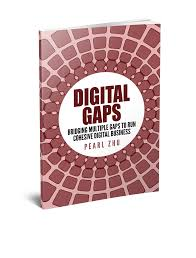 Digital Gaps: Bridging Multiple Gaps to Run Cohesive Digital Business
Digital Gaps: Bridging Multiple Gaps to Run Cohesive Digital Business
“Insight is a perception beyond the thought, a multi-dimensional cognizance, and it’s the experience to explore oneself, surrounds and beyond.” ― Pearl Zhu, Digital Gaps: Bridging Multiple Gaps to Run Cohesive Digital Business
“The more gaps a leader can bridge, the more significant influence she or he can make.” ― Pearl Zhu, Digital Gaps: Bridging Multiple Gaps to Run Cohesive Digital Business
“Knowledge pertains to knowing and to intelligence while wisdom has to do with the soundness of judgment.” ― Pearl Zhu, Digital Gaps: Bridging Multiple Gaps to Run Cohesive Digital Business
“Trust is a collective mind - the corporate culture. You can’t build and nourish trust without creating a conducive environment of trust.” ― Pearl Zhu, Digital Gaps: Bridging Multiple Gaps to Run Cohesive Digital Business
“Genuinely intelligence-led operations have to be embedded into both processes and more importantly mindsets to bridge the gaps in Risk Management.”― Pearl Zhu, Digital Gaps: Bridging Multiple Gaps to Run Cohesive Digital Business
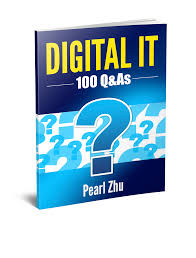 Digital It: 100 Q&As by Pearl Zhu
Digital It: 100 Q&As by Pearl Zhu
“Healthy debating enforces critical thinking principles - looking at things from the different angles, with increased perspective and less prejudgment.” ― Pearl Zhu, Digital It: 100 Q&as
“A bridge-like CIO has the mind to think via the multidimensional lens, the gut to innovate fearlessly; the strategy to lead wisely and the skill to move progressively.” ― Pearl Zhu, Digital It: 100 Q&as
“The CIO must now wear many hats, and see the forest through the trees.” ― Pearl Zhu, Digital It: 100 Q&as
“The difference between an “Atypical CIO” and a “Stereotypical CIO” is not about the physical identity but at the mindset level.” ― Pearl Zhu, Digital It: 100 Q&as
“CIOs may not be the subject matter expert of all IT domains, but they should understand technology enough to ensure they have a keen sense of judgment on the priorities for IT investment.” ― Pearl Zhu, Digital It: 100 Q&as
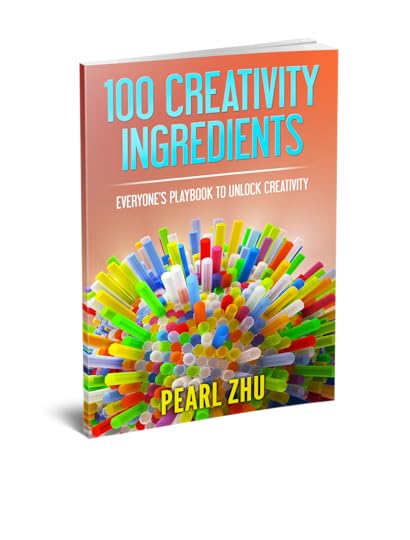 100 Creativity Ingredients: Everyone’s Playbook to Unlock Creativity by Pearl ZhuThe collective sensation is one’s perspective, experience, memory, imagination, and perception.65 Pattern understanding is the type of problem-solving thinking.― Pearl Zhu, 100 Creativity Ingredients: Everyone’s Playbook to Unlock Creativity by Pearl Zhu
100 Creativity Ingredients: Everyone’s Playbook to Unlock Creativity by Pearl ZhuThe collective sensation is one’s perspective, experience, memory, imagination, and perception.65 Pattern understanding is the type of problem-solving thinking.― Pearl Zhu, 100 Creativity Ingredients: Everyone’s Playbook to Unlock Creativity by Pearl Zhu
“A curious mind enjoys inquiring, experimenting and discovering.”-100 Creativity Ingredients: Everyone’s Playbook to Unlock Creativity by Pearl Zhu
“None of us will ever know enough, and that is why humility is a critical component of innovativeness.”-100 Creativity Ingredients: Everyone’s Playbook to Unlock Creativity by Pearl Zhu
“Be courageous to listen to what you don’t want to hear and have the guts to be innovative.”-100 Creativity Ingredients: Everyone’s Playbook to Unlock Creativity by Pearl Zhu
“Progress is in simplification, which often follows complexity.”-100 Creativity Ingredients: Everyone’s Playbook to Unlock Creativity by Pearl Zhu
Follow us at: @Pearl_Zhu
Published on May 07, 2017 23:01
Three Traits of Senior Leadership
 Leadership is about future and change. More specifically, leadership is about creating a powerful future that is compelling in the present, utilizes the best talents, capabilities, and resources of their people and organization to drive changes and produce meaningful and valuable results. People lead in the different levels. Senior leadership of the organization or the society are like the steering wheel to ensure their ships are moving toward the right direction. Senior leadership is neither equal to seniority nor the big title, it implies the high level of intellectual and emotional maturity, strategic foresight, profound insight, decision wisdom, and high-level leadership influence.
Leadership is about future and change. More specifically, leadership is about creating a powerful future that is compelling in the present, utilizes the best talents, capabilities, and resources of their people and organization to drive changes and produce meaningful and valuable results. People lead in the different levels. Senior leadership of the organization or the society are like the steering wheel to ensure their ships are moving toward the right direction. Senior leadership is neither equal to seniority nor the big title, it implies the high level of intellectual and emotional maturity, strategic foresight, profound insight, decision wisdom, and high-level leadership influence.
Sound judgment: Generally speaking, compared to other junior level management position, the senior leadership role needs to spend significant time on making both strategic and tactical decisions on the daily basis. Hence, the sound judgment skill is important to enhance leadership effectiveness and improve decision-making capability. Due to the complexity and ever-changing business dynamic, sound judgment is a hardcore leadership competency and the prerequisite quality for being a senior leader. In the senior position, stay on strategic focus rather than the tactical details. That means the senior leaders are foresightful, can leverage strategic thinking (think longer term), systems thinking (contextual understanding the interconnectivity between the parts and the whole), creative thinking (think the alternative and better way to do things), independent thinking (junior leaders follow the senior leaders, but senior leaders should follow both their own mind and heart) Senior leadership is neither the status quo, not a ceremonial role, ideally, it means the leaders are reaching the high level of maturity to drive changes and make influence significantly. Biases and stereotyping are how humans cope with larger numbers of other humans than they could ever know. Therefore, senior leadership should set the tone for advancing and inclusiveness. There’s knowing unknown, there’s unknowing unknown, everyone perhaps has some blind spots blocking the way. But as a senior business leader (or any kind of leader), the blind spots will cloud your vision, trigger your negative emotion, cause your decision ineffectiveness, and compromise your leadership competency. Hence, even you are in the senior level position, being learning agile, learn from all necessary resource, learn from others, learn from the past, etc, but ultimately, you should shape your own viewpoint and practice your own leadership influence.
Abstraction: Compared to junior/middle or functional managers, senior leaders should focus on the holistic big picture, without getting distracted by trivial details. Senior leaders play the critical role in setting principle and policies, hence, abstract thinking helps them differentiate substance from style, grasp the quintessential from outdated information. Abstract your thoughts and words by omission, composition, generalization or idealization, to reach a point of agreement or develop the foundation of the timeless principles, in order to move the business forward. You must convey a clear message and communicate relentlessly and understand that not all of the stakeholders will move through the change curve at the same speed. Just because you have arrived at the other side does not mean everyone else has. Either making communication, negotiation or presentation, senior leaders should enforce communication to tailor audience via different styles. From abstraction to elaboration. Open your mind - listen (read) carefully, expecting to find some new insight. As a C-level position,, at a higher level, as many times abstraction enables agreement.
 Profundity: If in the industrial age, the louder you could speak, the more senior it sounds like; and then digital era changes the rules. The senior leadership should reflect on how profound they can think and how persuasive they can communicate. Leadership in itself is a constant learning process that requires the leader to build experience and to share insight. The more complex the situation is, the more different approaches and role gaming is needed to reach for in-depth understanding. Insight is an understanding of cause and effect based on the identification of relationships and behaviors within a model, context, or scenario. The difference between knowledge and insight is thinking, and especially lateral, nonlinear or multi-dimensional thinking, a holistic view. Ideally, when the rule is fair and the digital principle is clear, the deeper you can think, the more senior position you could reach. Furthermore, insight is being able to identify the root cause of a problem or the core issues. Senior leaders should have ability to frame the right problems, before delegating others to solve them. We all know often solving the wrong problem is even worse than doing nothing about it. The difference between senior and junior (middle) leadership is not about how many answers you have, but about how well you can ask the open questions to attract best answers, and leverage all sorts of informations to see the big picture into which the knowledge fit, to improve decision effectiveness and enforce leadership maturity.
Profundity: If in the industrial age, the louder you could speak, the more senior it sounds like; and then digital era changes the rules. The senior leadership should reflect on how profound they can think and how persuasive they can communicate. Leadership in itself is a constant learning process that requires the leader to build experience and to share insight. The more complex the situation is, the more different approaches and role gaming is needed to reach for in-depth understanding. Insight is an understanding of cause and effect based on the identification of relationships and behaviors within a model, context, or scenario. The difference between knowledge and insight is thinking, and especially lateral, nonlinear or multi-dimensional thinking, a holistic view. Ideally, when the rule is fair and the digital principle is clear, the deeper you can think, the more senior position you could reach. Furthermore, insight is being able to identify the root cause of a problem or the core issues. Senior leaders should have ability to frame the right problems, before delegating others to solve them. We all know often solving the wrong problem is even worse than doing nothing about it. The difference between senior and junior (middle) leadership is not about how many answers you have, but about how well you can ask the open questions to attract best answers, and leverage all sorts of informations to see the big picture into which the knowledge fit, to improve decision effectiveness and enforce leadership maturity.
Senior leadership makes influence from mindset to behavior, and evolving to what is needed next for radical changes and societal advancements. Leadership is ripened when the power of leadership is based on acute observation, insightful understanding, sound judgment, courageous questioning, unconventional connection, careful discernment, and deep penetration. And the senior leadership is less about hierarchy, more about leadership maturity.
Follow us at: @Pearl_Zhu
Published on May 07, 2017 22:59
How to Gauge the Success of IT Digital Transformation
 As businesses embark on the “Digital Era” of computing and managing, the digital has become ’normality,’ and almost everyone now feels at ease with digital technology, but also feels a bit overwhelming about the exponential growth of information. IT is always in the changing environment creating unexpected situations and requiring quick and appropriate responses based on the conditions. So how to shift IT from the reactive support function to a proactive digital engine of the company? And How to gauge the success of IT digital transformation?
As businesses embark on the “Digital Era” of computing and managing, the digital has become ’normality,’ and almost everyone now feels at ease with digital technology, but also feels a bit overwhelming about the exponential growth of information. IT is always in the changing environment creating unexpected situations and requiring quick and appropriate responses based on the conditions. So how to shift IT from the reactive support function to a proactive digital engine of the company? And How to gauge the success of IT digital transformation?
The assessment of IT digital transformation should focus on evaluating how IT impacts the top line business growth: CIOs need to make an objective evaluation on how IT can directly contribute to the organization's strategic direction and the top line growth. CIOs must lead IT in reaching high-level performance. Making IT department a profit center is one of the biggest challenges in most of the organizations. IT needs to be considered a line of business, and not some back office, geek function. The transformative digital CIOs have already changed the focus of their work - from technology oriented tactical managers to information technology leaders and business strategist. IT should position itself as an "enabler of corporate strategy and mission," rather than an "enabler of technology." Therefore, the measurement of IT digital transformation success should focus on how IT impacts the top line business growth and builds the long-term business competency. When IT organization is perceived as being innovative, it is on the right track to reach the success of digital transformation. IT needs to become the business’s innovation engine, rather than just tools. IT is the only entity in the organization supposed to understand business entirely and catch the oversight of organizational processes horizontally. The ultimate success of IT should be evaluated on how IT is able to provide an innovative solution or supply a differentiated solution that contributes to both top line growth and the bottom line success of the organization.
The assessment of IT digital transformation also needs to measure operational excellence: IT has to provide stability and operational health, which requires a serious amount of positive communication whilst continuously looking for cost efficient replacement of unstable or "old" processes. The cost part of the IT departments should be part of an overall corporate / company budget. Therefore, making the IT department a profit center is what the real challenge because it requires some kind of rethinking and reinventing the corporate processes and retuning the business capabilities. IT metrics has to evolve from being a cost center to becoming a revenue generator. The only way to do this is to show a clear link to top executives between IT efficiency and productivity/ top-line revenues. This is an important step to building IT reputation as a strategic business partner via both achieving both operational excellence and maximizing innovation potential.
 The assessment of IT digital transformation should evaluate the customer satisfaction and employee engagement rate: Digital is the age of people. People are always at the center of digital transformation. IT should shift from operation-driven to customer-centric, IT has two sets of customers, the internal business users and the end business customers. The success of IT digital transformation is dependent on how IT can enable and empower the business users with the latest digital technologies to improve their productivity and stimulate their creativity, ensure the right people getting the right information to make right decisions timely; it also depends on how IT can help to digitize every touch point of the end customer experience, and improve the overall customer satisfaction. From talent management perspective, it is an assessment of employee engagement, meaning associated with their job, flexibility, career growth and freedom. All functions in the organization have a stake in strategic talent management practices, IT can empower talented employees to unleash their potential, and make the digital workplace more creative and productive, to drive the business success for the long run. IT is on the right track of digital transformation when every level of the organization has great work relationships with IT teams, CIOs are like the digital conductor who can orchestrate their own sheet music, not just the background music, and IT truly become the trusted business partner and change agent.
The assessment of IT digital transformation should evaluate the customer satisfaction and employee engagement rate: Digital is the age of people. People are always at the center of digital transformation. IT should shift from operation-driven to customer-centric, IT has two sets of customers, the internal business users and the end business customers. The success of IT digital transformation is dependent on how IT can enable and empower the business users with the latest digital technologies to improve their productivity and stimulate their creativity, ensure the right people getting the right information to make right decisions timely; it also depends on how IT can help to digitize every touch point of the end customer experience, and improve the overall customer satisfaction. From talent management perspective, it is an assessment of employee engagement, meaning associated with their job, flexibility, career growth and freedom. All functions in the organization have a stake in strategic talent management practices, IT can empower talented employees to unleash their potential, and make the digital workplace more creative and productive, to drive the business success for the long run. IT is on the right track of digital transformation when every level of the organization has great work relationships with IT teams, CIOs are like the digital conductor who can orchestrate their own sheet music, not just the background music, and IT truly become the trusted business partner and change agent.
With increasing pace of changes, CIOs generally have greater opportunities to stand out and practice digital leadership in driving innovation and leading digital transformation across their companies. You can only manage when you measure. When a CIO is able to position and lead the IT organization via objective assessment to ensure it addresses both IT effectiveness and efficiency, agility and innovation, flexibility and scalability, they have earned their stripes.
Follow us at: @Pearl_Zhu
Published on May 07, 2017 22:56
May 6, 2017
The Digital Board Composition/Refreshment Inquiries
 Contemporary boards play the crucial directorial role in business strategy oversight, performance monitoring, business advising and policy setting. They are also the mastermind behind digital transformation. Not only do today’s BoDs need to have sufficient knowledge to understand the digital business ecosystem, but also they need to have the collective insight to present today and foresee the future. The matter of fact is that the changes sweeping the business are hugely disruptive and there is nowhere to hide. Leadership is all about change and directorship is about steering the business toward the right direction. From board composition and refreshment perspective, which challenges do you face, when and how do you tackle the issue of change in the boardroom? And how to build high-performance boards for today and the future?
Contemporary boards play the crucial directorial role in business strategy oversight, performance monitoring, business advising and policy setting. They are also the mastermind behind digital transformation. Not only do today’s BoDs need to have sufficient knowledge to understand the digital business ecosystem, but also they need to have the collective insight to present today and foresee the future. The matter of fact is that the changes sweeping the business are hugely disruptive and there is nowhere to hide. Leadership is all about change and directorship is about steering the business toward the right direction. From board composition and refreshment perspective, which challenges do you face, when and how do you tackle the issue of change in the boardroom? And how to build high-performance boards for today and the future?
How do you define diversity and embrace inclusiveness? What do you see as the most important types of diversity in terms of filling decision blind spots at the boardroom? Conventional wisdom defines diversity based on physical identity such as gender or race, but even you have the seemly diverse group of people, but if they practice the same “in box” thinking, without cognitive difference, group thinking is perhaps still one of the biggest pitfalls to compromise decision effectiveness and board maturity. It is the difference in thinking and perspectives that diversified BoDs bring to team decisions. The board should optimize their decision-making processes in the presence of an "outsider," that causes organizations with boards of more diversified BoDs to outperform organizations with homogeneous boards. To put simply, “diversity of thoughts” should be the decision factor for board to embrace inclusiveness. This diversity along with deep knowledge of the business will allow them to be real "thought partners" with senior management as they consider the longer term goals beyond quarterly earnings. Diversification is a component, and in some cases a very good initiation of multidimensional business value creation. The directors need to be diverse by mindsets, industry background, skills, experience level, and perspective. If boards set the leadership tone for embracing cognitive diversity and appreciate independent thinking, people start to think, understand, learn and work together leading to better decisions and better performance.
How can board set the tone for encouraging innovation and digital transformation? Boards should understand that innovation is not one individual's or even a department's responsibility. It is a leadership effect and cultural issue. Boards as top leadership teams should participate or even lead in the area of both innovation management and management innovation. Thus, the board’s composition and refreshment will directly impact on the attitude and aptitude to innovation and digital transformation. The important issue is how the board accommodates diverse opinions and how they assess them and converge the diverse thought into wise decisions for both innovation governance and management innovation. Although the major responsibility of Board is for practicing governance, which doesn’t mean to stifle innovation, on the opposite, it means to set principles & guidelines for allowing the business to manage innovation in an effective way. With creative new blood, BoDs can make the proper policies to encourage innovation, as well as manage risks. It requires acknowledgement, involvement, and commitment.
 How willing are directors to make way for new directors when fresh skills and diversified experiences more closely aligned to the digital strategy are called for? The Board is responsible for ensuring an appropriate mix of skills, knowledge, and experience are present or available for it to fulfill its function. The boards as top directorial roles need to be open-minded, embrace the better way to do things. Digitize boardroom via complementary skills and experience, build creative tension between collegiality and challenge. Even the majority of BoDs are senior executives, they need to break down the “status quo,” present learning agility. They need to educate themselves by hearing different views about the organization, its environment, and strategic alternatives. and show the inquisitiveness to ask the tough and right questions.
How willing are directors to make way for new directors when fresh skills and diversified experiences more closely aligned to the digital strategy are called for? The Board is responsible for ensuring an appropriate mix of skills, knowledge, and experience are present or available for it to fulfill its function. The boards as top directorial roles need to be open-minded, embrace the better way to do things. Digitize boardroom via complementary skills and experience, build creative tension between collegiality and challenge. Even the majority of BoDs are senior executives, they need to break down the “status quo,” present learning agility. They need to educate themselves by hearing different views about the organization, its environment, and strategic alternatives. and show the inquisitiveness to ask the tough and right questions.
The digital board composition and refreshment are all about digital fitness. The best fit for the board depends on the Board’s current makeup, culture, and which “gap” needs to be filled. So the Board composition needs to embrace both cognitive difference, functional difference, and other experience/capability difference. The high mature digital board is built on a foundation of integrity, welcome and embrace diverse thoughts, value those thoughts and behave accordingly. Digital BoDs today are democratic, diversified, cogitative, and proactive, bring different opinions and viewpoints, should have the ability to balance resources, risks and consequences.
Follow us at: @Pearl_Zhu
Published on May 06, 2017 23:19
Is IT a Building Block or a Roadblock of Digital Transformation
 Nowadays technologies make impacts on every vertical industry and information permeates into every corner of the organization. IT is becoming more critical, but still, there are discrepancies between how IT evaluate its own influence & performance and how IT is perceived by business. Sometimes, business partners think IT is lagging behind the change curve, and IT is seen as a drag on innovation. Even IT should be the irreplaceable building block of differentiated business capabilities, businesses perceive IT as the roadblock. So how can IT turn around these negative perception and build a strong reputation as a change agent, innovation engine and driving force of digital transformation?
Nowadays technologies make impacts on every vertical industry and information permeates into every corner of the organization. IT is becoming more critical, but still, there are discrepancies between how IT evaluate its own influence & performance and how IT is perceived by business. Sometimes, business partners think IT is lagging behind the change curve, and IT is seen as a drag on innovation. Even IT should be the irreplaceable building block of differentiated business capabilities, businesses perceive IT as the roadblock. So how can IT turn around these negative perception and build a strong reputation as a change agent, innovation engine and driving force of digital transformation?
IT is the roadblock when IT is the threshold of business capability and unique competency: The role of digital IT is to identify and blend the ways that information and technology can enable and shape the business capability and capacity by linking all digital aspects (goals, objectives, actions, etc.) together to enforce the business competency. These are then mixed with other business ingredients to create products and processes which generate differentiated business capabilities for strategy management and the business’s long-term growth. Organizations acquire the differentiated capability to reshape products, services, and customer engagement, with the help of digital technologies, IT is no doubt the roadblock. However, if IT only took orders from the business, over-promised and under-delivery, IT is seen as the roadblock which drag down the speed of business changes. Those negative IT perceptions shouldn’t be ignored by senior IT management, they need to realign their operation model from insight out operation driven to outside in customer focused, setting prioritization mechanism, so that customer preferences and requirements are reflected throughout the organization, which will be business beneficial in terms to speed up change and delivery.
IT is the building block when business-IT gaps are shrinking; and it would be the roadblock if the gaps are enlarging: The disconnect between business and IT not only causes miscommunication but even worse to decelerate and fail the business. Bridging the gap between IT and the business are really issues of all about change. The steps, processes, tools and products that organizations use to make decisions and effect the transformation from strategy to deployment. To bridge the gap, you cannot know only one piece of the equation. CIOs have to know both the business and the technology side of things and take an advisory role in communication and coaching. Listen, engage and nurture relationships with customers and build an integrated view of business insight derived from information extracted from different sources. Business leaders should also have the desire to understand IT better in order to bridge the knowledge gap and capture business insight for managing a holistic and seamless digital transformation. Running IT as the building block is not just about fixing things, but leveraging tradeoff, integrating IT and business to build a set of crucial business capabilities such as efficiency, flexibility, agility, risk intelligence, and ultimate organizational agility.
 IT is the building block if IT can become the business solutionary; IT would turn to be the roadblock if it does not “keep the end” - the strategic business goals in mind: In most of the organizations, IT is setting back and waiting for the request, and no wonder often being perceived as a roadblock; to be the building block of changeability, IT needs to gain a better understanding of the business and show that knowledge by talking business to the business; IT has to be configured in a way to understand the business and set the framework to deliver the business and market need. And IT's ability to execute and communicate. IT needs to transform from an order taker to an order shaker. IT has to be a strategic advisor to the business to maximize the revenue. IT at all levels needs to understand how the business makes and loses money, and it needs to articulate solutions around this with business language. IT is being not only analytically measured by the business, it is being measured by every customer experience the leadership of the business has with IT deliveries they experienced. That sets a very high standard that internal IT is either a roadblock to slow down the changes or the building block to accelerate digital transformation.
IT is the building block if IT can become the business solutionary; IT would turn to be the roadblock if it does not “keep the end” - the strategic business goals in mind: In most of the organizations, IT is setting back and waiting for the request, and no wonder often being perceived as a roadblock; to be the building block of changeability, IT needs to gain a better understanding of the business and show that knowledge by talking business to the business; IT has to be configured in a way to understand the business and set the framework to deliver the business and market need. And IT's ability to execute and communicate. IT needs to transform from an order taker to an order shaker. IT has to be a strategic advisor to the business to maximize the revenue. IT at all levels needs to understand how the business makes and loses money, and it needs to articulate solutions around this with business language. IT is being not only analytically measured by the business, it is being measured by every customer experience the leadership of the business has with IT deliveries they experienced. That sets a very high standard that internal IT is either a roadblock to slow down the changes or the building block to accelerate digital transformation.
The idea that the IT organization is perceived as the roadblock, overlooked as an innovation driver and is being bypassed by business units comes at an odd time when you consider the robust new technology prospects and pervasive information influence. IT needs to be the building block to develop dynamic digital capabilities and gain the differentiated advantage for the organization’s growth and maturity.
Follow us at: @Pearl_Zhu
Published on May 06, 2017 23:17



